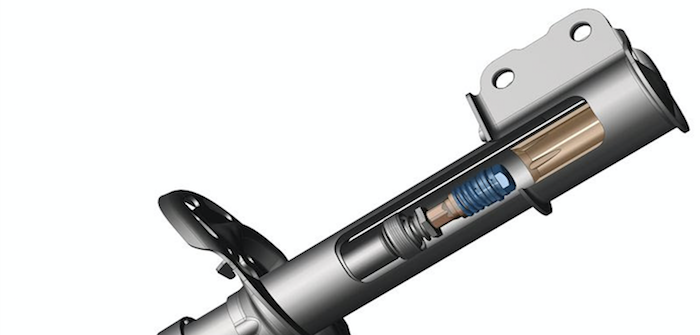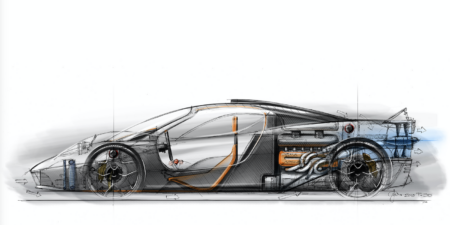A new technology that replaces conventional hard bump stops with hydraulic compression stops (HCS) integrated into the dampers is being developed by global braking and chassis systems specialist, BWI Group.
According to BWI, the system is designed to reduce the peak force transmitted to the vehicle body at the limit of compression (the so-called ‘spike’ loads), which means the vehicle body can be lighter because the strength and stiffness requirements are lower for the same standard of refinement and durability.
The system is claimed to be not only more tuneable than conventional bump stops, leading to better vehicle dynamic performance, but also to provide NVH benefits. The reduced load peaks, which are now better cushioned by HCS, allows chassis designers to make greater use of the available damper travel. The system improves occupant comfort and chassis refinement while ensuring that a heavily laden vehicle, which is more likely to bottom its suspension, can do so without transmitting damaging loads into the body structure.
HCS is being developed in two key areas, one to suit applications where high levels of damping are required, and one for low levels. The development is being carried out at the company’s technical center in Krakow, Poland.
“We are developing two HCS technologies in order to provide optimum solutions for all our customers because they each have specific priorities,” explained Roman Bielak, BWI Group’s technology development manager. “Both approaches improve the comfort, refinement and durability of the vehicle, but one offers greater potential for fine tuning while the other provides higher levels of damping.”
The high level damping HCS was created by re-optimizing the company’s hydraulic rebound stop (HRS) technology for use in compression, and is achieved by the addition of a sealed hydraulic chamber with a by-pass to the damper’s existing compression valve. For applications requiring lower levels of damping, BWI Group uses a damper tube swaged to give two diameters. The larger diameter is the main damper valve, the smaller engages a second valve at the chosen threshold of travel, before the limiting stroke is reached.
“The benefits of HCS are particularly helpful in hybrid or electric vehicles which are derived from existing models,” said Bielak. “The technology copes well with the additional weight of a large battery pack and the lower cabin noise levels when driving in electric mode demand equally low levels of transmitted noise from the suspension.”
HCS is also applicable to other vehicle types; both the high and low-damping technologies under development by BWI Group are aimed initially at medium-range premium passenger cars. According to the company, customers are already evaluating the low-damping HCS system, which has been confirmed for production in 2018.
“As vehicle manufacturers increase their demands for ride comfort, body control and load-carrying capacity, it is increasingly important to provide controlled deceleration at both ends of the damper travel,” added Bielak. “The ability to control both compression and rebound travel hydraulically, with HCS and HRS, has enabled us to extend the performance range of passive dampers, providing more of the functionality associated with adaptive dampers but at lower cost and weight.”





